Method of binary output in c language
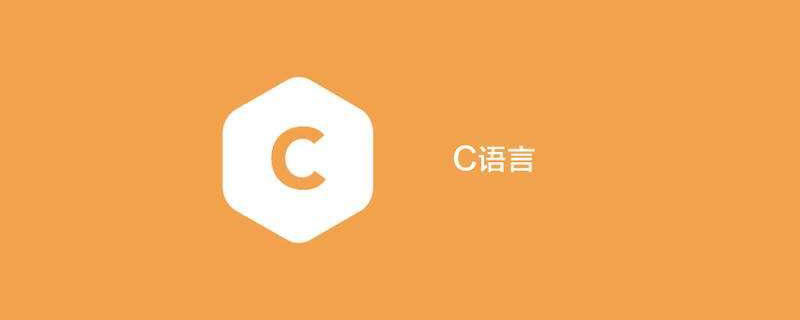
C language binary output method
1. First open vc6.0 and create a new project.
Recommended learning: c language video tutorial
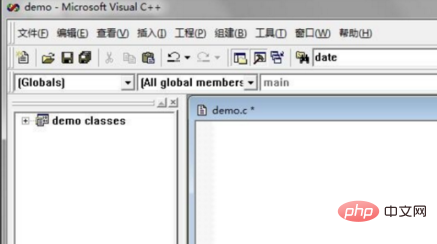
2. Add the header file.

#3. Add the main function.
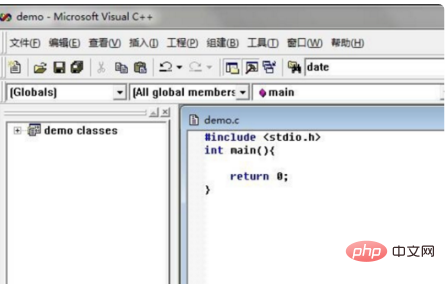
#4. Define a function binSubtracton that adds two numbers.
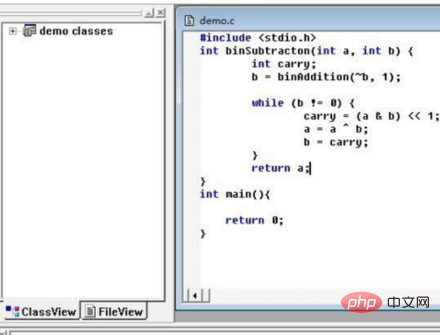
#5. The int properties number1, number2, binSub are defined in the main function.
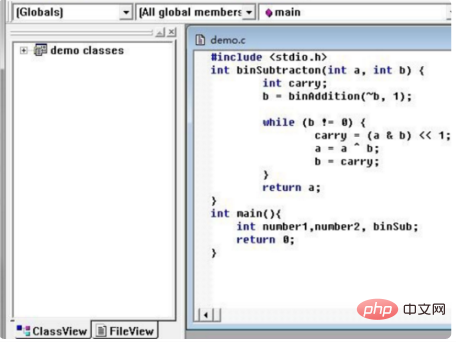
#6. Use scanf to assign values to variables.
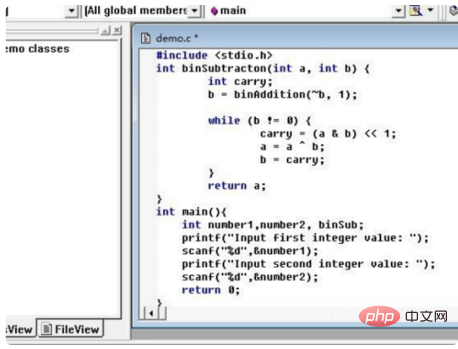
7. Call binAddition and binSubtracton.
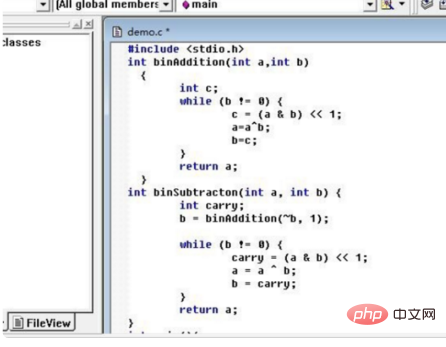
8. Use printf to print the results.

The above is the detailed content of Method of binary output in c language. For more information, please follow other related articles on the PHP Chinese website!

Hot AI Tools

Undresser.AI Undress
AI-powered app for creating realistic nude photos

AI Clothes Remover
Online AI tool for removing clothes from photos.

Undress AI Tool
Undress images for free

Clothoff.io
AI clothes remover

AI Hentai Generator
Generate AI Hentai for free.

Hot Article

Hot Tools

Notepad++7.3.1
Easy-to-use and free code editor

SublimeText3 Chinese version
Chinese version, very easy to use

Zend Studio 13.0.1
Powerful PHP integrated development environment

Dreamweaver CS6
Visual web development tools

SublimeText3 Mac version
God-level code editing software (SublimeText3)

Hot Topics
 The meaning of strlength in c language
Apr 03, 2025 pm 06:18 PM
The meaning of strlength in c language
Apr 03, 2025 pm 06:18 PM
The strlen() function gets the length of the string, excluding the empty character '\0': 1. Calculate the number of characters without empty characters; 2. Iterate over the string until the empty character is found; 3. Return the length of the string, type size_t.
 What does eps mean in C language
Apr 03, 2025 pm 05:18 PM
What does eps mean in C language
Apr 03, 2025 pm 05:18 PM
eps in c language is the abbreviation of "epsilon", which represents a very small positive number, which is used to represent errors in floating-point operations. Its uses include: comparing the equality of floating point numbers, determining accuracy limits, serving as a stop condition for iterative algorithms, and preventing numbers from underflowing or overflowing.
 What does C language char mean?
Apr 03, 2025 pm 05:03 PM
What does C language char mean?
Apr 03, 2025 pm 05:03 PM
char is the data type that stores a single character in C language, occupying 1 byte of memory, with a value range of -128~127, and the default value is '\0' (empty character). It can be used to store and manipulate individual characters, but cannot directly store strings or Unicode characters, and cannot be compared directly with strings.
 What does {0} mean in C language
Apr 03, 2025 pm 05:06 PM
What does {0} mean in C language
Apr 03, 2025 pm 05:06 PM
In C, braces {} are used to initialize the array, and {0} represents a list of initializers containing unique element 0, initializing all elements of the array to 0. Other uses include: structure initialization ({0} initializes all members to 0), and joint initialization ({0} initializes all members to 0).
 What does \0 mean in c language
Apr 03, 2025 pm 05:09 PM
What does \0 mean in c language
Apr 03, 2025 pm 05:09 PM
In C language, '\0' represents an empty character, and its uses mainly include: 1. End string as the end flag of the string; 2. Terminate the character array and determine the length by '\0'; 3. Fill in unused memory; 4. In earlier versions, boolean values should be represented, but the bool type should now be used.
 What does model mean?
Apr 03, 2025 pm 05:36 PM
What does model mean?
Apr 03, 2025 pm 05:36 PM
In C language, model usually refers to a model or modal, which is used to represent patterns or frameworks of different states or behaviors. Specific usages include: 1. Model class: properties and methods containing specific entities or concepts; 2. Modal window: special windows in the user interface that prevent interaction with other windows; 3. Design pattern: templates for predefined solutions to solve common programming problems; 4. State machine: machines that make decisions based on current state and input.
 How to define global variables in C language
Apr 03, 2025 pm 05:45 PM
How to define global variables in C language
Apr 03, 2025 pm 05:45 PM
Yes, global variables can be defined in C language using the following syntax: Specify the data type of the variable (such as char, int, float) and declare the variable name (identifier) using a semicolon (;) Ending statement For example, define a global character array named name: char name[];
 What does swap mean in C language
Apr 03, 2025 pm 06:27 PM
What does swap mean in C language
Apr 03, 2025 pm 06:27 PM
In C language, the swap instruction is used to exchange the values of two variables: swap(x, y): swap(x, y): swap the values of x and y can be achieved by using temporary variables or bit operations.






